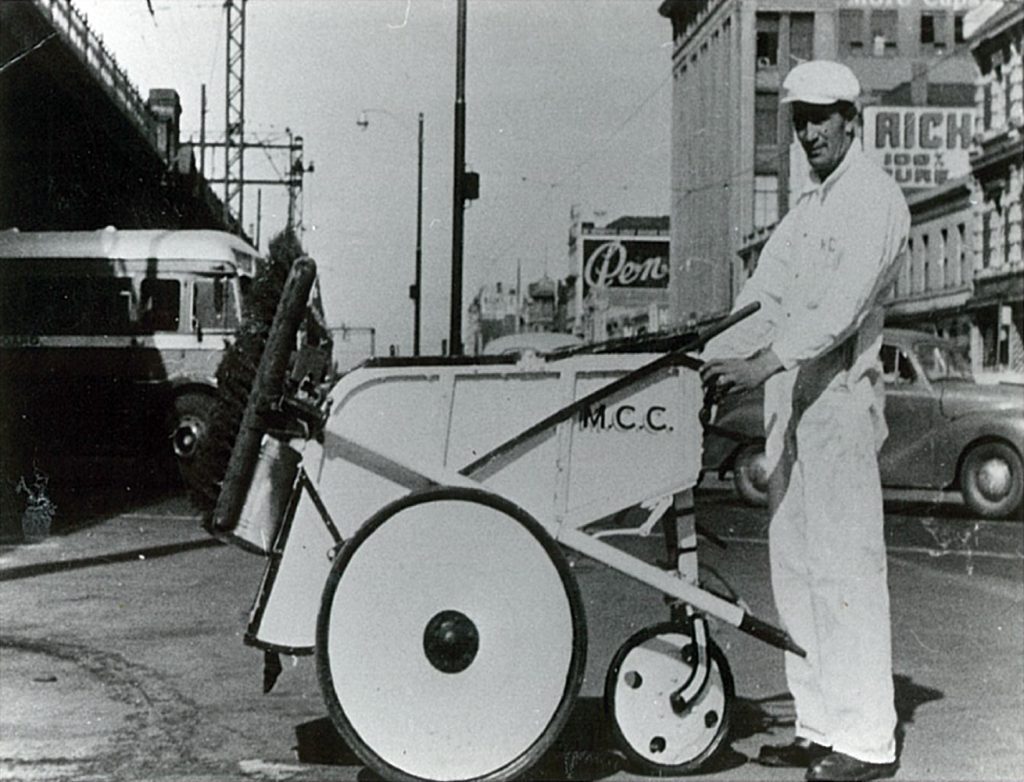Orderly Trolley, street cleaning, City of Melbourne, 1936
Summary
White painted orderlies cart, 2 large wheels, smaller wheel in front. Used for street cleaning 1936-1970.
However, quaint and decidedly manual the orderly trolley may now appear, it represents a development in both the concept of the city beautiful and the actuality of cleaner streets that is distinctly 20th century.
As Melbourne historian Prof Andrew May has written, in the 19th century horse manure was an ever-present and largely accepted aspect of urban life: ‘A special brigade of juvenile workers, known as orderly or scoop boys, was employed to clear the streets of horse litter, a sometimes risky enterprise as they dodged the city's traffic. The erection of orderly bins in the 1880s facilitated city cleanliness, and loads of street gleanings sent to the manure depot were often requested by private citizens or institutions for land-fill or for top-dressing gardens. In 1885 the 'crossing-sweeper nuisance' had many streets 'infested by boys alternately playing pitch & toss and begging off ladies & gentlemen as they pass up and down the footpath'. (Andrew May, ‘Horses’, The Encyclopedia of Melbourne, Cambridge University Press, 2005.)
From the early 20th century, more thought was given to dealing with the problem as a city sanitation issue. In 1909, George Soper brought this perspective to the fore in his book Modern Methods of Street Sweeping: ‘The increasing interest taken in the matter of clean streets and the absence of any treatise which may serve as a guide to right principles and practices in this branch of sanitation has tempted me to bring together some of my notes on this subject.’ Soper also proffered some irresistible statistics, such as that during an eight hour working day 1,000 horses produce 2,200 litres of urine and 10 tonnes of manure.
In time, there was a shift away from the use of dismally paid, scruffy ‘scoop boys’ and towards the formal employment of men wearing a Council prescribed uniform. This shift also saw the emergence of the purpose-designed and built orderly’s trolley, such as this one made by the City of Melbourne in 1936.
As a postscript, the international emergence of the orderly trolley even found its way into popular culture in the form of a ‘Three Stooges’ episode. ‘So Long, Mr Chumps’ (1941) commences with a scene of the hapless trio throwing themselves into yet another new role as street cleaners, complete with an orderly trolley. Predictably, their new job is over in no time.
